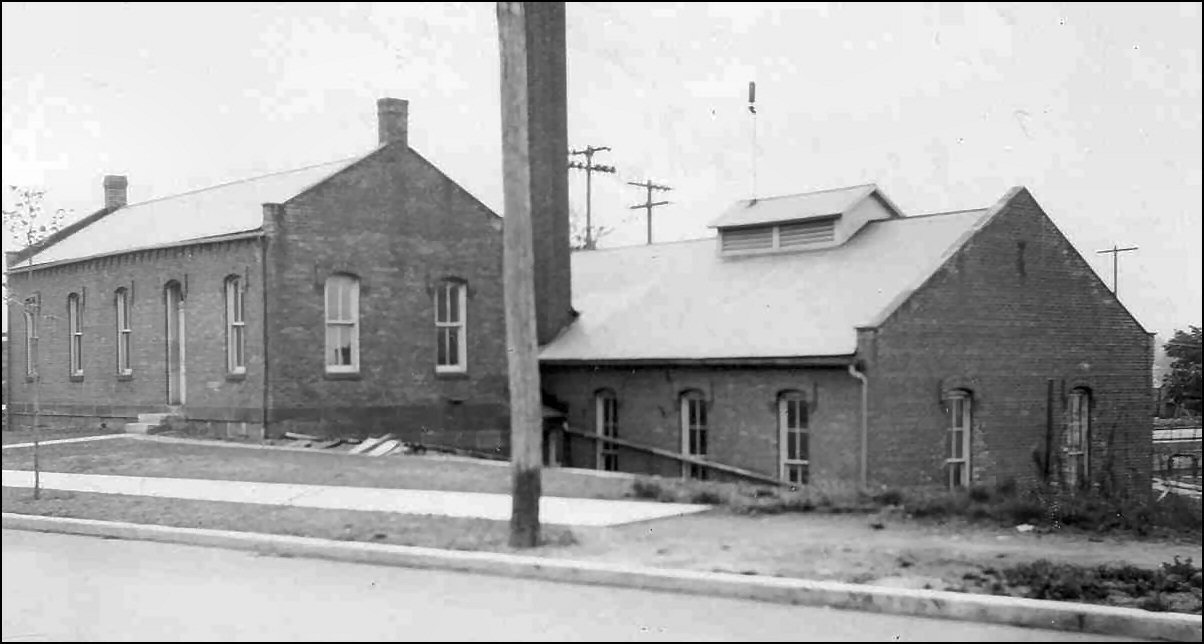Water Treatment History
View in timeline format(PDF, 198KB)

"The Columbus Experiment" was known internationally and was the first water plant to combine filtration and water softening.
In 1903, $46,000 was provided for an initial testing facility to analyze the drinking water and wastewater. These experiments resulted in the construction of the Scioto Water Purification Plant and Pumping Station on Dublin Road which was completed in 1908 (photo). This major project became known internationally as "The Columbus Experiment" and was the first water plant to combine filtration and water softening. This plant replaced the first water supply system placed in operation May 1, 1871 which consisted of a well and the Westside Pumping Station (below, right photo) built at the confluence of the Scioto and Olentangy Rivers.
Two brothers, Clarence Hoover, chief chemist and bacteriologist of sewage treatment, and Charles Hoover, chemist in charge of the water plant, were instrumental in inventing methods of water and wastewater treatment that are still used today. They helped to shape water treatment and were committed to continuously improving treatment methods. Charles Hoover is credited with the co-discovery of a water softening process using lime and soda ash. Their efforts reduced the number of deaths resulting from typhoid in the early 20th century.
In the 1940s, along with plans to construct a reservoir on Big Walnut Creek, came the design for a new water treatment plant. This plant would produce almost double the amount of water being supplied by the Scioto River Plant and the recently added Nelson Road Water Plant.
 In June of 1956, the Big Walnut Water Treatment Plant located on Morse Road was completed with a capacity to treat 50 million gallons of water daily. The population of metropolitan Columbus at the time was approximately 620,000. In 1969, expansion increased the Morse Road plant's treatment capacity to 130 million gallons a day as Columbus grew to a population of almost 900,000.
In June of 1956, the Big Walnut Water Treatment Plant located on Morse Road was completed with a capacity to treat 50 million gallons of water daily. The population of metropolitan Columbus at the time was approximately 620,000. In 1969, expansion increased the Morse Road plant's treatment capacity to 130 million gallons a day as Columbus grew to a population of almost 900,000.
Shortly thereafter, construction began on additional treatment facilities. In 1975, a new water plant was completed on the original grounds of the Scioto Water Purification Plant and Pumping Station. This plant is known as the Dublin Road Water Plant. In 1979 in southern Franklin County, results of geological and hydrological testing led to the development of the wellfield and the construction of the Parsons Avenue Water Plant.
In recent years*, the Division of Water provided an average of 145.1 million gallons of drinking water daily to the over 1.38 million residents, businesses, and industries that make up the Greater Columbus Area. The Morse Road Water Plant (renamed the Hap Cremean Water Plant in 1988) provided 51% of water in the service are and has a 125 million gallons daily (MGD) capacity; the Dublin Road water plant provided 34% of the water and has a capacity of 80 MGD million; and the Parsons Avenue Water Plant provided 15% of the water and can treat up to 50 MGD. *For the most up to date stats, please review our Annual Report in the publications section of the Document Library.
These water plants are constantly upgraded to meet the demands of this growing community and new regulations.
A new automated system for process control and additional underground clearwells were installed at the Hap Cremean Water Plant. The clearwell expansion increased the plant's storage capacity by 50 million gallons. At the Parsons Avenue Water Plant, additional wells will soon be added to increase the supply source.
These three plants are the strength that supplies quality water to the Greater Columbus Area. Water drawn from the reservoirs and wells must undergo a complex treatment process and meet stringent Federal and State EPA standards before it can be distributed to the public.
More on Water Sources.